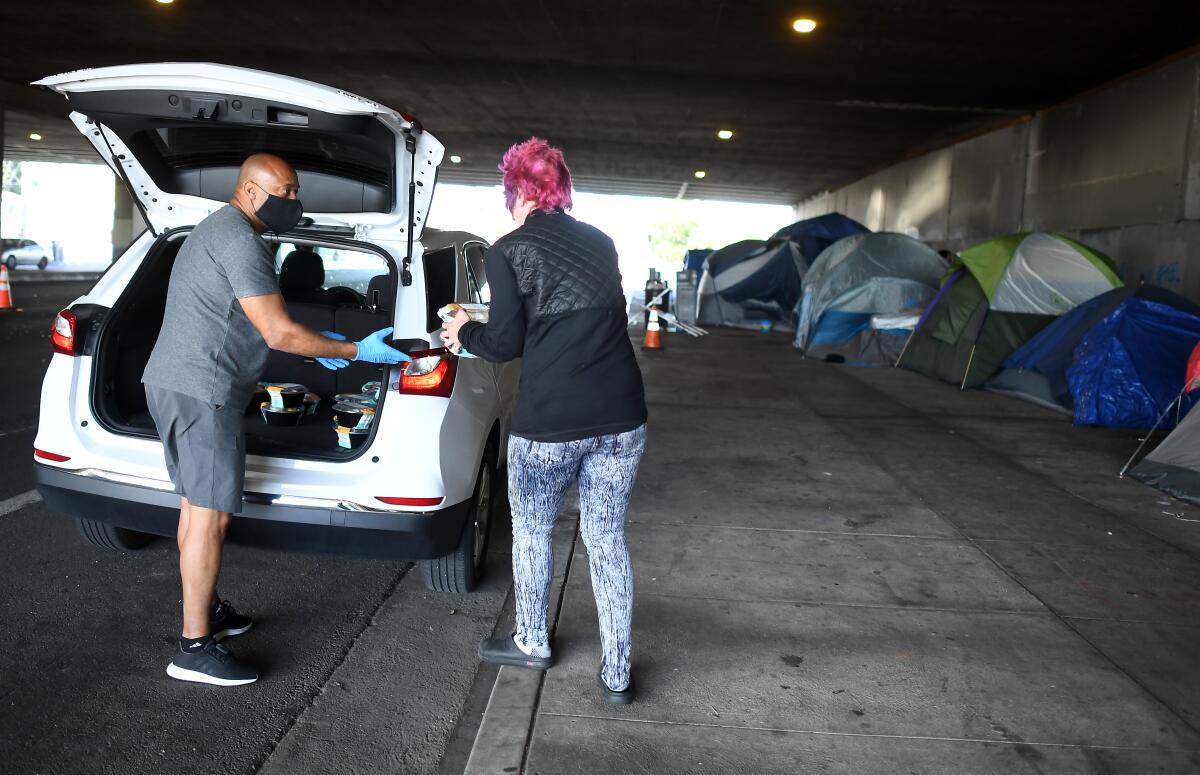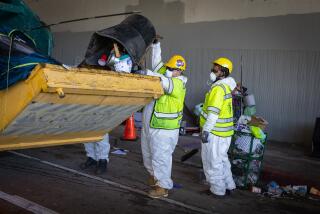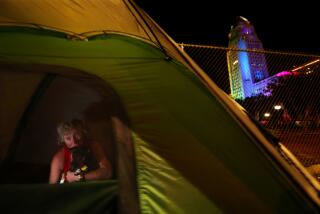Editorial: L.A. is being forced to house 3,100 people under freeways. What about everyone else?

In the city of Los Angeles, where 41,000 people are homeless, the need for housing and shelter was an emergency long before the coronavirus showed up. That’s painfully obvious to everyone — including David O. Carter, the federal judge overseeing a lawsuit filed by a group of Los Angeles business owners, downtown dwellers and homeless shelter residents. They argue that the city and county governments had violated a state welfare law by allowing homeless people to live on the streets.
Initially, the judge issued a preliminary injunction in May ordering the city and county to shelter an estimated 7,000 homeless people who dwell near or under freeway overpasses. His frustration with the lack of housing and shelter for homeless people was understandable. He channeled it the wrong way by making himself the judge, so to speak, of who gets priority instead of leaving that to professionals who do this work every day.
The city and County of Los Angeles came back with a settlement offer that the judge accepted.
The city agreed to provide 6,700 beds for homeless people in the next 18 months. That’s practically warp speed when it comes to housing or sheltering homeless people — even though 700 of those beds can come from plans the city already had in the works for housing or shelter. The county also agreed to spend roughly $300 million over five years to provide services to the people who would be housed.
And in this agreement, the city said it would find beds, first, for an estimated 3,100 people living near freeways and then for what the Los Angeles Homeless Services Authority considers the most vulnerable homeless people — those who are 65 and older or have an underlying health problem.
This settlement is still fraught. It still prioritizes the housing of people living under freeway overpasses over the housing of people that the Los Angeles Homeless Services Authority considers the most vulnerable, particularly to getting seriously ill from COVID-19. L.A. County Supervisor Mark Ridley-Thomas requested a study on the population of people living under the freeway. It showed that, overall, they were younger and healthier. (They also tended, percentage-wise, to include fewer Black people than the overall homeless population, which is nearly 34% Black.)
The judge was concerned about the exposure of people living under a freeway to the toxins nearby. But, in the overall environmental nightmare of homelessness, people choose to live under freeways to find shelter from the sun and rain and hostile neighbors.
But, we all agree there needs to be more housing. So if this really does get more housing and shelter built, that’s a remarkably good thing.
It remains to be seen how many of those “beds” will be in buildings with enclosed rooms and doors that people can close and lock behind them. In fact, the city has said it will fulfill the settlement terms with everything from apartments to group shelters to “safe sleeping” sites — which means a sanctioned campground of tents.
Under no circumstances, in the age of COVID-19, should the city be erecting large, congregate shelters. That’s what we’ve been trying to avoid by housing people in hotel and motel rooms. The city should try to find buildings, either publicly or privately owned, that can be converted into housing, along with hotels willing to lease out rooms long-term. The city should consider standing up so-called tiny houses, which are sometimes no bigger than garden sheds. That is no substitute for permanent housing, but it’s better than a warehouse of a shelter or a tent on a sidewalk.
Each of the 15 council districts has submitted basic suggestions for where and how to start sheltering whatever population of homeless people near freeways are in their district. And it’s hardly ideal to do this by council district. The number of people living under freeways varies substantially by district. One council member shouldn’t get out of providing housing because his or her district has fewer people living near a freeway — or more constituents pressuring them not to put up housing or shelter.
Councilman Mike Bonin doesn’t have a large number of people living near freeways in his Westside district. So, in addition to housing the people who are freeway-adjacent, Bonin has proposed in his plan housing a large encampment in his district that isn’t near a freeway but desperately needs shelter.
One troubling part of this settlement states that once there is enough housing or shelter for people living near a freeway, anyone who turns it down will be “relocated” away from the freeway. That means shooed away from whatever shelter they have jerry-built for themselves under that freeway out into neighborhoods where they are not wanted. Not only does that go against public health advice not to disperse homeless people during the pandemic, it goes against humanely allowing homeless people to stay in the few outdoor areas that offer some respite from the elements.
More to Read
A cure for the common opinion
Get thought-provoking perspectives with our weekly newsletter.
You may occasionally receive promotional content from the Los Angeles Times.






